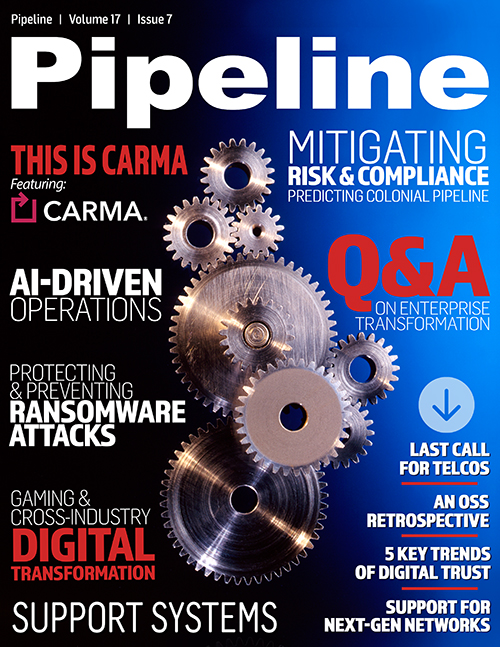Last Call for Telcos

A series of recent announcements are signaling a fork in the road for telcos: maintain business as usual or embrace innovation. While change won’t happen overnight, the decisions made now will determine the future course for telcos.
Maintaining ‘business as usual’ condemns today’s telcos to a shrinking social and economic role. Clinging to legacy processes, procedures and thinking will see the hyperscalers and other competitors cleave off the majority of the network and all of the profitable business. The alternative is for thought leaders in the telco industry to lead development of new processes and procedures that enable telcos to develop productive innovation ecosystems within which they can act as intelligent consumers. This will open the door to a strong and growing social and economic role.
A trigger for telco innovation
For decades there has been talk of disaggregation in the telco industry. This has led to a lot of handwringing about OTT (“over the top”) companies and missed opportunities for additional profitable businesses. But now the hyperscalers are moving down into the core telco infrastructure and the most profitable lines of business.
Recently, Google made two significant announcements. In the first, it said that in cooperation with Nokia and Intel, Google would provide the complete digital portion of cellular infrastructure at each of its caches. Caches are points of presence from which Google and others deliver low latency services. In the announcement, Google said that it had caches in over 3,000 locations. But industry sources tell me that it actually has approximately twice that number—and it’s growing.
The two companies are already testing providing the DU (Distributed Unit – neighborhood digital portion of 5G basestation) and CU (Centralized Unit – metropolitan digital portion of the 5G basestation unit) functionality currently being defined by O-RAN. This would leave only the RU (RF Unit, sometimes called the radio unit or radio head) clearly inside a telco.
Google is not alone. AWS, Azure, Equinix, and others are on the same path.
If, as is highly likely, these hyperscalers can offer cellular infrastructure as a service at a price that is lower than the current cost incurred by telcos operating their own cellular infrastructure—and cellcos don’t innovate to dramatically lower those costs—around 80 percent of today’s cellular infrastructure could shift to hyperscalers.
The second Google announcement was of a deal with Cisco—and it’s not the only one. Others are striking similar deals. In this arrangement, enterprises would be able to order an edge router or other SDN product configured to operate directly with Google’s infrastructure. Here again, if, as seems likely, Google can offer a lower-cost service to enterprises than telcos currently can, the very profitable telco enterprise business is at risk. If the telcos don’t innovate in enterprise service quality and cost, they stand to lose one of their most profitable lines of business.
A friend at Google was discussing the telco innovation problems with me many months before the above announcements. He said, “When AT&T is dead and being buried, Google will be standing over the grave holding a gun.” During his long career, he has been repeatedly frustrated by the lack of telco innovation, which sparked the emotion in his comment.
As a company, Google needs low-cost, easy to use, reliable ways of reaching its services. If the telcos can provide this at reasonable cost, Google (and others) will be happy to use it. But what companies like Google see is a growing gap between what is possible and what is available from telcos. This gap is caused by a progressive decline in telco innovation that motivates them to move into the space.
Until recently, there have been two significant barriers to entry for new competitors into the telco space: proprietary APIs and spectrum licenses. Ericsson and Nokia have claimed that the APIs in their infrastructure products are proprietary and that no product can legally access those APIs without a license from them. Furthermore, they withheld such licenses. Recently, the US Supreme Court ruled in a case between Google and Oracle that the use of such APIs without a license is legal, thus effectively removing this barrier.
The other barrier to entry is financial. It involves the purchase of spectrum licenses. The telcos have been able to outbid the hyperscalers in the spectrum auctions because the telcos have access to less expensive capital. This lower cost of capital is based on the financial markets’ perception that telcos are very low-risk businesses. If and when the financial markets recognize that the disaggregation and hyperscaler cream-skimming is removing large portions of the telco business, this advantage could disappear. Meanwhile LEO (low-earth orbiting) satellite operators have found a way around telco terrestrial spectrum licenses. So, this barrier to entry is weakened and may be coming down.



















